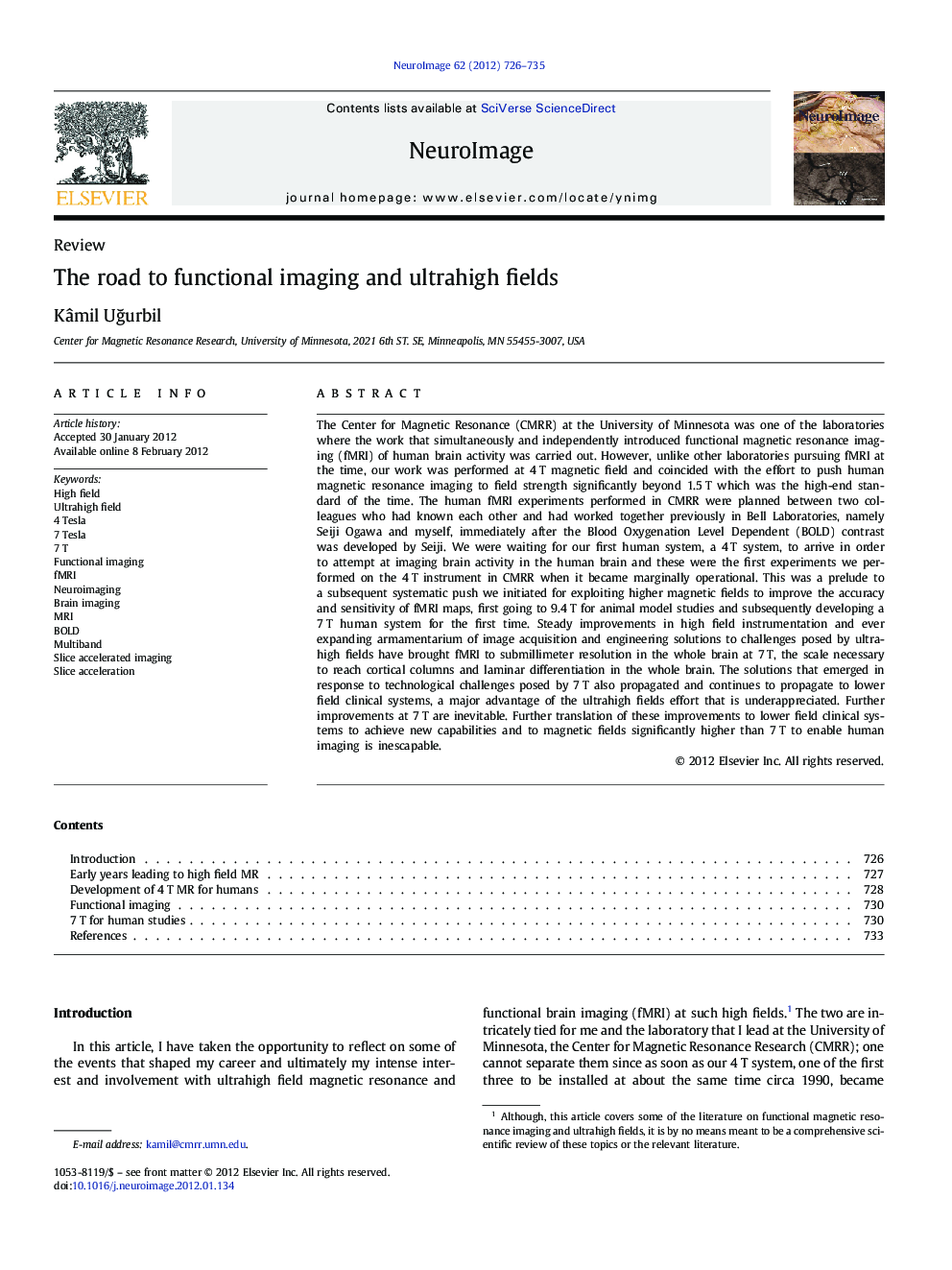| کد مقاله | کد نشریه | سال انتشار | مقاله انگلیسی | نسخه تمام متن |
|---|---|---|---|---|
| 6031595 | 1188734 | 2012 | 10 صفحه PDF | دانلود رایگان |
عنوان انگلیسی مقاله ISI
The road to functional imaging and ultrahigh fields
دانلود مقاله + سفارش ترجمه
دانلود مقاله ISI انگلیسی
رایگان برای ایرانیان
کلمات کلیدی
موضوعات مرتبط
علوم زیستی و بیوفناوری
علم عصب شناسی
علوم اعصاب شناختی
پیش نمایش صفحه اول مقاله

چکیده انگلیسی
The Center for Magnetic Resonance (CMRR) at the University of Minnesota was one of the laboratories where the work that simultaneously and independently introduced functional magnetic resonance imaging (fMRI) of human brain activity was carried out. However, unlike other laboratories pursuing fMRI at the time, our work was performed at 4Â T magnetic field and coincided with the effort to push human magnetic resonance imaging to field strength significantly beyond 1.5Â T which was the high-end standard of the time. The human fMRI experiments performed in CMRR were planned between two colleagues who had known each other and had worked together previously in Bell Laboratories, namely Seiji Ogawa and myself, immediately after the Blood Oxygenation Level Dependent (BOLD) contrast was developed by Seiji. We were waiting for our first human system, a 4Â T system, to arrive in order to attempt at imaging brain activity in the human brain and these were the first experiments we performed on the 4Â T instrument in CMRR when it became marginally operational. This was a prelude to a subsequent systematic push we initiated for exploiting higher magnetic fields to improve the accuracy and sensitivity of fMRI maps, first going to 9.4Â T for animal model studies and subsequently developing a 7Â T human system for the first time. Steady improvements in high field instrumentation and ever expanding armamentarium of image acquisition and engineering solutions to challenges posed by ultrahigh fields have brought fMRI to submillimeter resolution in the whole brain at 7Â T, the scale necessary to reach cortical columns and laminar differentiation in the whole brain. The solutions that emerged in response to technological challenges posed by 7Â T also propagated and continues to propagate to lower field clinical systems, a major advantage of the ultrahigh fields effort that is underappreciated. Further improvements at 7Â T are inevitable. Further translation of these improvements to lower field clinical systems to achieve new capabilities and to magnetic fields significantly higher than 7Â T to enable human imaging is inescapable.
ناشر
Database: Elsevier - ScienceDirect (ساینس دایرکت)
Journal: NeuroImage - Volume 62, Issue 2, 15 August 2012, Pages 726-735
Journal: NeuroImage - Volume 62, Issue 2, 15 August 2012, Pages 726-735
نویسندگان
Kâmil UÄurbil,